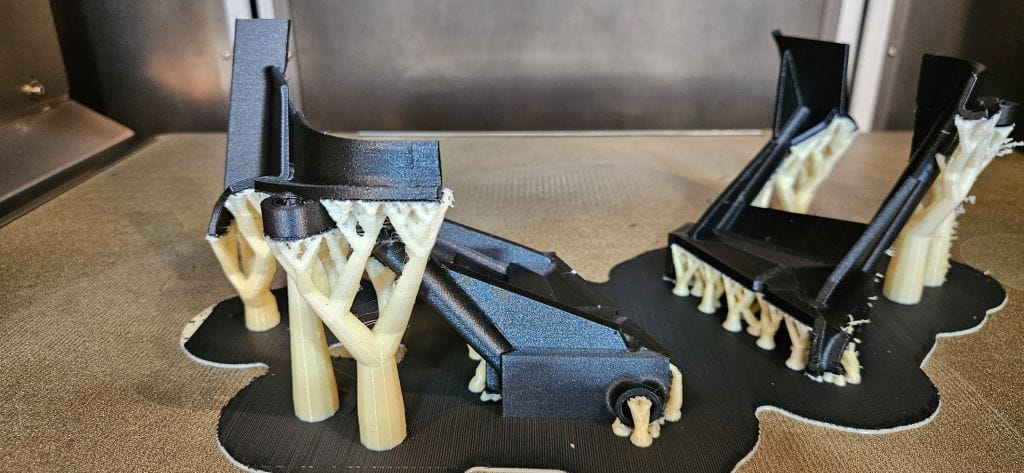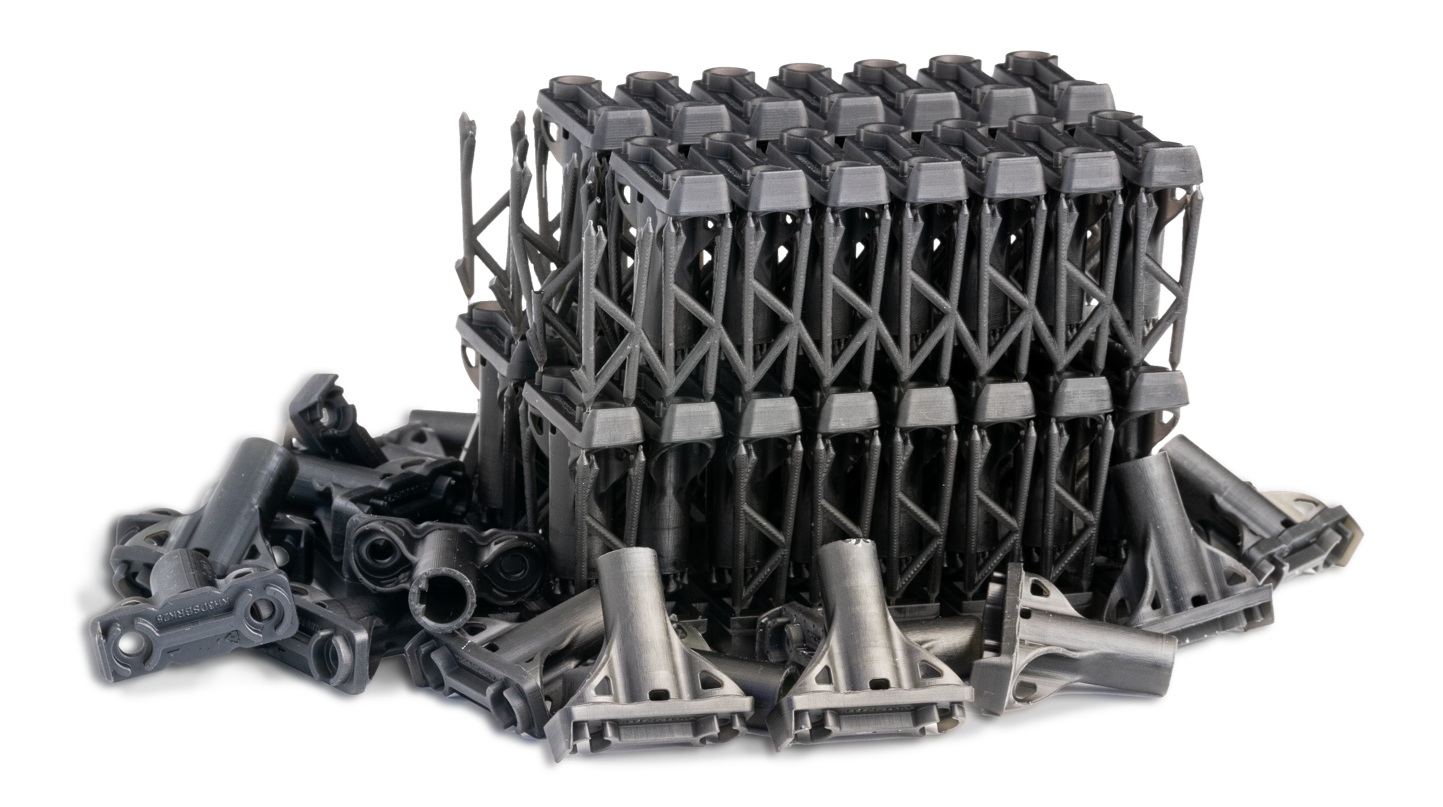
3D Systems launches MJP 300W Plus Wax 3D Printer
3D Systems announce MJP 300W Plus wax 3D Printer as the new GOLD Standard for investment casting wax models. Premium quality, speed and efficiency The

MCT Engineering has introduced in-house industrial 3D printing to boost design control and accuracy. The investment cuts costs and speeds up production of carbon fibre components for hypercars and F1.
Founded in 1997, MCT Engineering has maintained its position at the forefront of British carbon fibre manufacturing for almost three decades, working with leading marques including Aston Martin, BMW, Cosworth, JLR, McLaren, and Mercedes Benz.
Specialising in producing composite components and bodyparts for hypercars and Formula 1 racing vehicles, precision engineering has been key to its success.
MCT Engineering has continually invested in the best industrial manufacturing equipment to support its clients’ requirements for high performance parts, including Ilmor F1 composite engine parts. The company now owns a fleet of five modern autoclaves, and employs more than a hundred technicians, CAD operators, and designers at its expanded headquarters in Daventry, Northamptonshire.
In 2019, MCT Engineering began working with an external provider to incorporate industrial 3D printing into the manufacture and assembly of brake ducts, engine plenums, body panels, bumpers, oil tanks, and wing mirrors for high-performance vehicles.
The search for higher performance
“We have a culture of continuous improvement, and invested in 3D laser scanning in 2023,” explains Gwyn Roberson, innovation and futures director at MCT Engineering, “We wanted to bring 3D printing in-house, to gain more design control and allow ourselves a wider range of material choices. We began researching industrial 3D printers to explore which materials could be printed and how they would perform in comparison to our existing methods.”
Solving shrinkage problems
Before investing in its own machine, MCT Engineering undertook a period of research to test the capabilities of different industrial 3D printers and materials.
High-performance engine components have to be assembled in a very specific way, with very tight tolerances. Production engineer, Felix Schwarz, explains that previously, when assembling high precision parts for hypercar engines, MCT would manufacture jigs and fixtures to ensure accuracy. This involved encasing the part in wet lay fibre composites, allowing the block to cure overnight, then removing the part. MCT Engineering began researching whether the same or higher levels of accuracy could be achieved using a 3D printed jig or fixture.

“You will always get shrinkage, but we’ve been studying new materials that can be 3D printed to provide more consistency,” Mr Schwarz reports. “We’ve experimented with fibre reinforced PEEK, Ultem 1010, fibre-reinforced Nylon and other high temperature filaments. It’s about getting to know each material and how it behaves.”
The selection process
After narrowing down the search to two leading 3D printing manufacturers, Gwyn Roberson met Grant Cameron, managing director of CDG 3D Tech, at a trade show, where he was impressed by the quality of components that had been printed using the Intamsys Funmat Pro 610 HT 3D printer. This was followed up by a period of intensive trials to test the quality of the Intamsys Funmat Pro 610 HT, allowing MCT Engineering to discover more about the range of materials and compounds that could be printed, and their thermal properties.
“Even with larger printers, you can lose accuracy, so you end up having to re-adjust the jig by hand. We chose the Funmat because it is open source, which allows us to lower the cost of materials. It also offered higher levels of accuracy than other printers,” Mr Schwarz states.
Benefitting from new materials
Felix Schwarz explains that using the industrial 3D printer has allowed MCT Engineering to provide more of its employees with first-hand experience. The Intamsys Funmat Pro 610 HT has also opened up the option of using new materials within the manufacturing process that can withstand much higher temperatures during the curing process. MCT Engineering has printed using fibre reinforced PEEK, Ultem 1010, fibre-reinforced nylon and other high temperature filaments.
“We were surprised to discover that new materials, including PEEK and Ultem could be printed and then autoclaved at 130-150°C. This allowed us to 3D print really stable structures for jigs, moulds and low-volume tooling,” Mr Schwarz explains. “Many high temperature filaments are hygroscopic, meaning that they draw in atmospheric moisture and become softer over time, which affects the accuracy of fit.”
Gaining industrial 3D printing expertise
MCT Engineering’s team was provided with a day and a half of training by CDG 3D Tech’s industrial 3D printing specialists, who installed and set up the printer at the Daventry factory.

“We’ve had quite a lot of support from CDG 3D Tech; they installed the 3D printer, provided specialist training and helped with the Intamsys software. We can’t fault them,” Mr Schwarz enthuses. “Over the past 18 months we’ve been through the learning curve to understand how new materials work, their strengths and limitations, and even which solvents to use to clean the printer bed so that the parts don’t lift throughout the print.”
“The specialist training was invaluable to understand how high temperature materials behave throughout the printing process. We have had challenges with fibre reinforced PEEK, which is probably one of the most difficult high temperature filaments to print.”
CDG 3D Tech business development manager, Miles Cameron, comments: “MCT Engineering has taken the next step on from using traditional polymer and metal CNC machined mould tooling. Industrial 3D printing offers greater versatility in the projects they can complete, while lowering cost and increasing the speed at which they can complete new projects.”
Exploring new manufacturing methods to grow the business
Felix relates that MCT’s testing phase has included a trial project involving the printing of an extractable core for carbon fibre pipes and ducts, which creates a smooth internal surface:
“We were impressed with the fact that we could use the industrial 3D printer to create hollow components, such as brake ducts, which are smooth inside. Normally, while the outside surface of carbon fibre components is smooth, the inner surface can be quite rough. By 3D printing the component, we get a smooth inner and outer surface, which is optimal for airflow and cooling, so we’re hoping to grow this aspect of our business.”
Achieving consistently high quality
Felix highlights that one of the key benefits of 3D printing from a CAD drawing is that MCT Engineering employees can produce components to a consistent accuracy and high quality. He also cites the benefit of being able to rapidly prototype a component to a client’s brief.
MCT has seen some time savings from its investment in the Intamsys Funmat Pro industrial 3D printer. “Depending on the part being manufactured, it can take from 48 hours to a week to pattern, tool, and produce a carbon fibre component using traditional manufacturing processes. A standard part can be produced in up to 24 hours, while a smaller component mould can be made and autoclaved within eight hours. By comparison, it takes 12 to 24 hours to 3D print a part, depending on its size and the complexity of its geometry,” Felix Schwarz affirms.

The road ahead
MCT Engineering has greatly reduced the cost of printing parts in-house that were previously outsourced to specialist industrial 3D printing providers. The investment in the Intamsys Funmat Pro 610 HT 3D printer is also allowing more MCT staff to gain hands-on experience, and ensuring consistently high-quality components for racing cars and hypercars produced at the Daventry facility.
“Investing in our own industrial 3D printer, with CDG 3D Tech’s training and support, saves time and allows MCT Engineering to print components more economically and undertake a de-risking study on new projects which opens up opportunities for us to grow our business,” concludes Gwyn Roberson.
MCT Engineering
https://mct-carbon.com
CDG 3D Tech
https://cdg.uk.com

3D Systems announce MJP 300W Plus wax 3D Printer as the new GOLD Standard for investment casting wax models. Premium quality, speed and efficiency The

INTAMSYS Launches the FUNMAT PRO 310 APOLLO: Redefining Continuous Production with High-Speed, High-Strength PEEK & PAEK 3D Printing Over the past decade, FFF 3D printing

Culinary Concepts & the story of the Brass Crab When a Crab, a 3D Scanner and a 3D Printer come together to create a replica

BATCH 3D PRINTING In order to print in batches you need a fully reliable printer which can handle printing multiple parts at once. You also

FIGURE 4 F3 ORANGE DELIVERS HIGH RESOLUTION, FOR RAPID PROTOTYPE PARTS. 3D Systems have released a new materials – the Figure 4 F3 Orange is